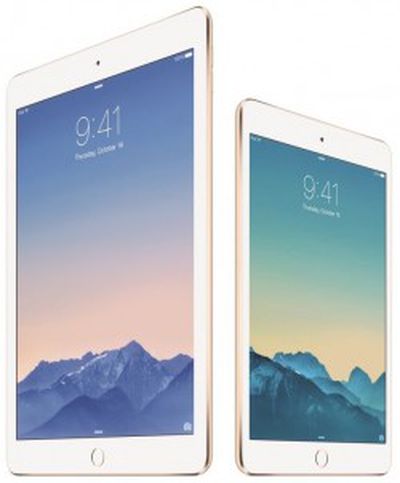 With the iPad Air 2, one of Apple's main selling points has been the improved display, which includes a new bonded construction that eliminates the air gap between the display and the cover glass, as well as a new antireflective coating to reduce glare in situations with high ambient light.
With the iPad Air 2, one of Apple's main selling points has been the improved display, which includes a new bonded construction that eliminates the air gap between the display and the cover glass, as well as a new antireflective coating to reduce glare in situations with high ambient light.
Ray Soneira of DisplayMate Technologies has now put the new display to the test, finding that the antireflective coating is indeed a significant improvement for the iPad and a major step above competing tablets, but in overall performance competitors are still doing better than the iPad. Apple receives only minimal credit for the bonded display, as it is mainly catching up with competitors on that aspect.
A major innovation for the iPad Air 2 (that is not fully appreciated) is an anti-reflection coating on the cover glass that reduces ambient light reflections by about 3:1 over most other Tablets and Smartphones (including the previous iPads), and about 2:1 over all of the very best competing Tablets and Smartphones (including the new iPhone 6). [...]
However, other than the new anti-reflection coating and bonded cover glass, the display on the iPad Air 2 is essentially unchanged and identical in performance to the iPad 4 introduced in 2012, and is actually slightly lower in performance than the original iPad Air (for example 8% lower Brightness and 16% lower display Power Efficiency) – most likely the result of an obsession with producing a thinner Tablet forcing compromises in the LCD backlight.
With competitors such as Samsung, Amazon, and Microsoft offering better color accuracy, viewing angles, and power efficiency, Soneira finds the improvements in the iPad Air 2 insufficient to move the device to the top of his tablet display rankings, and the Samsung Galaxy Tab S retains its number one position.
Moving on to the iPad mini 3, Soneira unsurprisingly finds that the display is unchanged from the one used in the previous generation, unsurprising given that Apple kept the specs of the iPad mini identical with the exception of the Touch ID home button and a gold color option. Soneira notes the unchanged display is a "major disappointment", as the iPad mini 2's display has been rated poorly for color gamut and accuracy.
In 2013 the mini was given a Retina display, but remained with a reduced 62 percent Color Gamut – the only current iPad or iPhone without a full Color Gamut. Now, in 2014 the new iPad mini 3 still only has a 62 percent Color Gamut, plus it was denied the new enhanced anti-reflection coating and bonded cover glass of the iPad Air 2.
Soneira again points to competitors offering higher-quality displays on their tablets, concluding that the iPad mini 3 is "embarrassingly mediocre and way overpriced" considering its $399 starting price tag and significantly poorer display performance compared to both competitors and the iPad Air 2.
Full details on Soneira's testing of the new displays are available in his extensive report.























